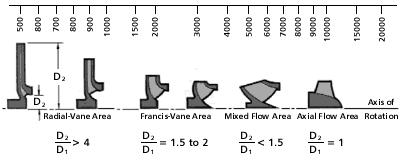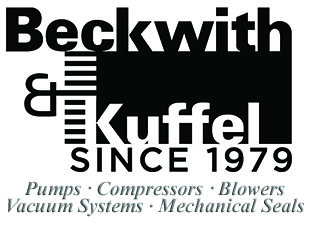The understanding of this definition is of design engineering significance only, however, and specific speed should be thought of only as an index used to predict certain pump characteristics. The following formula is used to determine specific speed:
N = Pump speed in RPM
Q = Capacity in gpm at the best efficiency point
H = Total head per stage at the best efficiency point
The specific speed determines the general shape or class of the impeller as depicted in Fig. 3. As the specific speed increases, the ratio of the impeller outlet diameter, D2, to the inlet or eye diameter, Di, decreases. This ratio becomes 1.0 for a true axial flow impeller.
Radial flow impellers develop head principally through centrifugal force. Pumps of higher specific speeds develop head partly by centrifugal force and partly by axial force. A higher specific speed indicates a pump design with head generation more by axial forces and less by centrifugal forces. An axial flow or propeller pump with a specific speed of 10,000 or greater generates it's head exclusively through axial forces.
Radial impellers are generally low flow high head designs whereas axial flow impellers are high flow low head designs.



